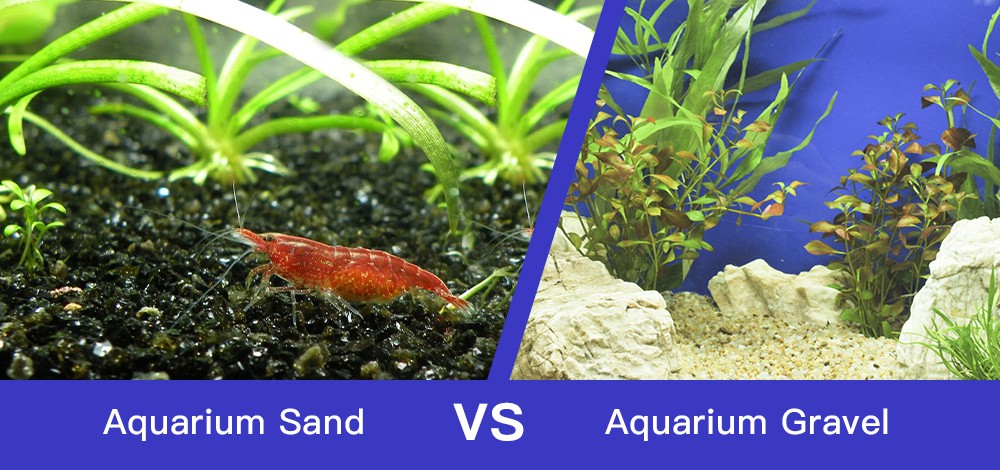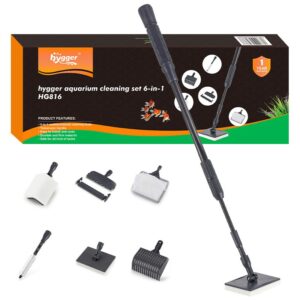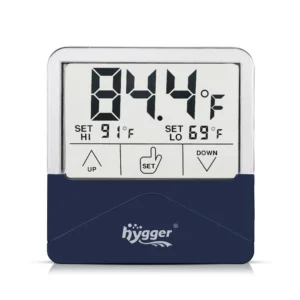The home aquarium needs something to be placed at the bottom to fix the water plants, make the fish inhabit, and make the fish aquarium more beautiful. These things placed at the bottom are called substrates, and there are many different types to choose from.
Content Table
Pebbles
Small pebbles are cleaned, smooth, and inert (i.e. chemically inert) gravel, easy to keep clean by vacuum adsorption, and suitable for medium and large fish that like to dig. Its shape and color provide a fresh and clean look to any freshwater aquarium or the original ecological aquarium of a stream or river. Small pebbles with a grain size of 5-10 mm are usually used.
Silver Sand (quartz sand)
Silver Sand also has many other names, but it looks like you would expect to find it on beaches or children’s sandboxes around the world. This kind of sand is very fine and needs to be washed before being put into the aquarium. Silver sand is naturally produced in fresh water and seawater. Many species of fish are adapted to filter food in these sands, including stingrays, cory catfish, and pearl cichlids. The silver sand is soft and light in color. Silver sand is too fine to be used for planting alone. When the thickness exceeds 5 cm, the sand will condense into blocks. When using a large filter, sand will be sucked into the filter system.
River Sand
River sand can be as fine as silver sand, or it can be of mixed granularity and shape, and the color can be brown, gray, or gold. It is inert. It needs to be washed when used. River sand is a good medium for planting plants and extending roots. River sand can be used in any freshwater aquarium, but it is especially attractive in delicately decorated aquariums and original ecological aquariums because the neutral bottom bed created by river sand enhances the color of fish and plants.
Silica Sand
Silica grit is orange, usually 1 to 3 mm in size, and is an inert material. It is commonly used as a mechanical filter medium in swimming pool filters and commercial water purification systems. It can be used in various types of freshwater aquariums. When mixed with base fertilizer, it is a good substrate for plant growth.

Colored Gravel
Colored gravel is inert natural gravel, and the gravel is covered with protective paint that is harmless to fish. There are many colors, from black to blue, bright pink, orange, and white, and everything in between. Mixed-colored gravel usually contains several colors and is very popular, and so is gravel with fluorescent light.
Colored gravel is very popular among novices and those who want to add color to the aquarium. This gravel will not cause trouble to the fish. Although the light and shadow caused by the gravel may “wash off” the color of the fish, the brown catfish who likes to camouflage will not like a fluorescent pink substrate, and cannot camouflage. Smaller particle size is better for plants.
Coral Sand
As the name suggests, this is the bottom material composed of small coral fragments that can be placed in a marine aquarium. It is most common in marine aquariums, but because of its pH and alkalinity buffering properties, it can be used well in freshwater hard water aquariums, such as the cichlid fish aquarium in Lake Malawi.
Due to the color and texture of coral sand, it provides a kind of “ocean landscape” in freshwater aquariums, especially when combined with ocean rocks or tuff, but with ocean rocks or tuff, it will change and increase the pH level. Therefore, it cannot be used with soft water types, which also makes coral sand unsuitable for aquatic aquariums.
Baked Clay
Baked clay consists of clay particles that are baked at very high temperatures, which makes them porous and light in texture. Therefore, it is much lighter than normal sand or gravel. There are several types to choose from, and they are usually used in aquatic aquariums because they can release beneficial minerals that help plants grow. Baked clay is normally red or brown, or it can be the color of ashes. It is inert and can be used independently in freshwater aquariums or combined with the base fertilizer in aquatic aquariums. It is neat and natural.


Leave a comment